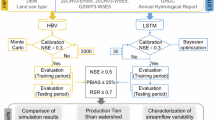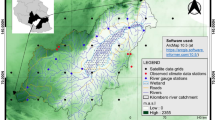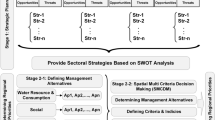Abstract
Confident assessment of the numbers of regional water balance and water resources for Atlases of MN Water Sustainability (AMNWS) has to be based on the best science, advanced knowledge and modern technology. Creating a watershed characteristic database is the first and most significant step in the analysis of time spatial distributions of Minnesota’s water balance components. The database spatially associates hydrologic data (annual discharge, monthly proportion, and yield) with topographical, soil and vadoze zone, ecological and hydrogeological conditions and properties. USGS stream flow data for 129 gauging stations surrounding MN was manipulated within ArcGIS. Characteristics of the 129 watersheds (drainage areas 100-10000 square miles) were summarized to create a matrix database (1947-1971 (79 watersheds), 1955-1979 (93), and 1976-2006 (74). Model as formal integrator of knowledge plays a central role for hydrological process in the landscape environment study. The use of cyber model of landscape (Krcho, 1978) and watershed as part of it (Shmagin, 1997) provides research tasks for data analyses. Six research tasks implied 17 initial matrixes incorporated the existing longtime hydrological data (from 25 to 109 years). Special part of database includes temperatures and precipitation (from 56 to 106 years) for 90 meteorological stations for MN and surrounding states (from US Historical Climatology Network: http://cdiac.ornl.gov/epubs/ndp/ushcn/usa_monthly.html). The data analysis (multivariate exploratory techniques) operates with two kinds of data: time series and maps that are integrated with use of GIS. Statistic was used with this database to transform initial matrixes of watershed characteristics into linear components and residual matrixes, establishing characteristics interconnections. To combine the results of data analysis of layered quantities and qualitative information onto a map of water resources with defined unit boundaries requires the fuzzy logic approach for regionalization (Shmagin and Chen, 2006). For AMNWS future developments, the watershed characteristics database can be upgraded to include monitoring of the surface and ground water regimes.
Similar content being viewed by others
Article PDF
Author information
Authors and Affiliations
Corresponding author
Rights and permissions
About this article
Cite this article
Nieber, J., Kanivetsky, R., Peterson, H. et al. Atlases of Minnesota Water Sustainability: Creation from Models, Analytical Methods, and Database of Watershed Characteristics. Nat Prec (2008). https://doi.org/10.1038/npre.2008.2378.1
Received:
Accepted:
Published:
DOI: https://doi.org/10.1038/npre.2008.2378.1



